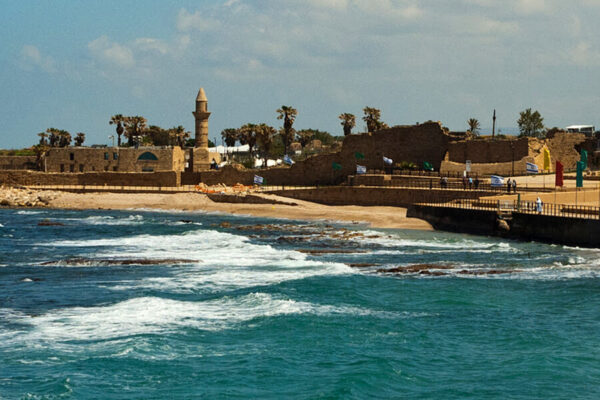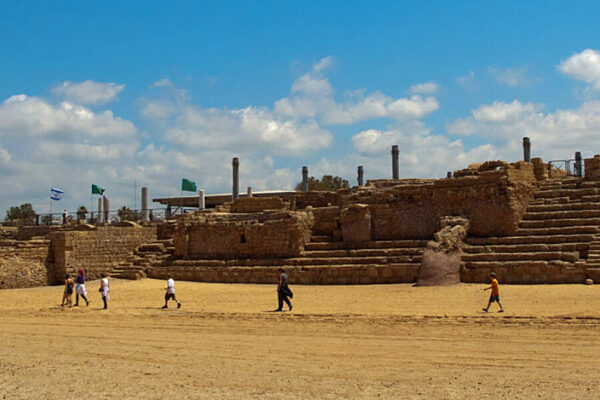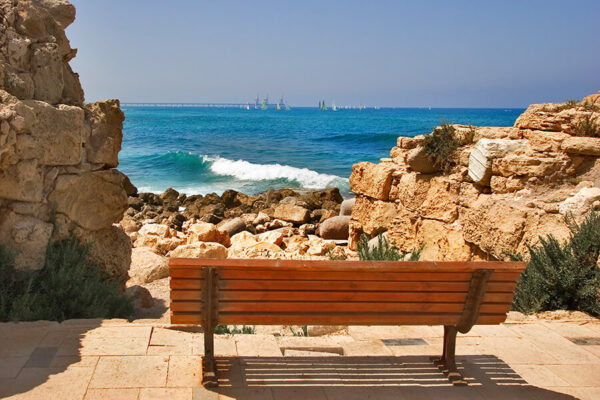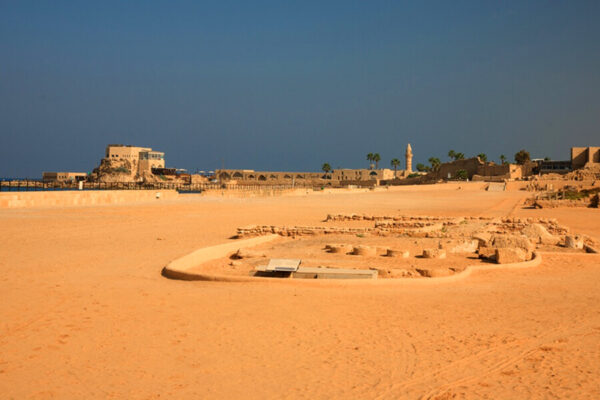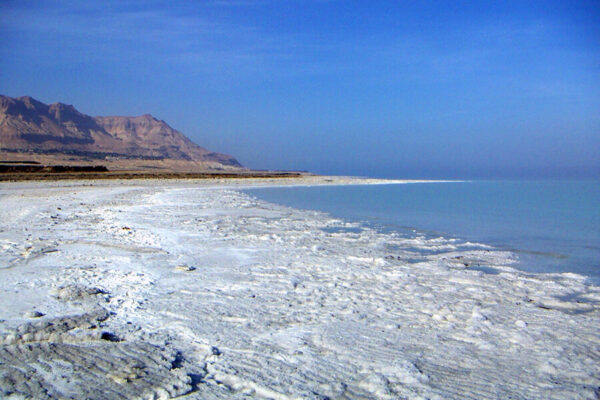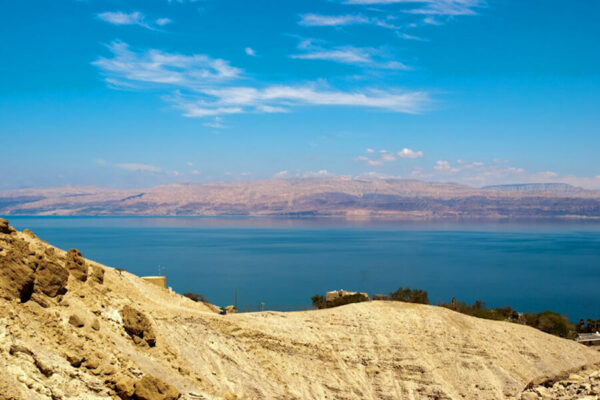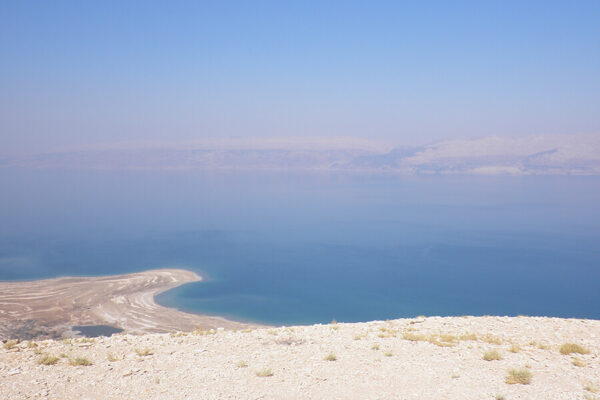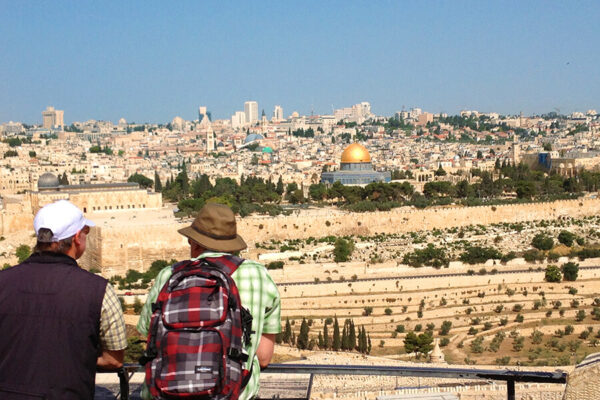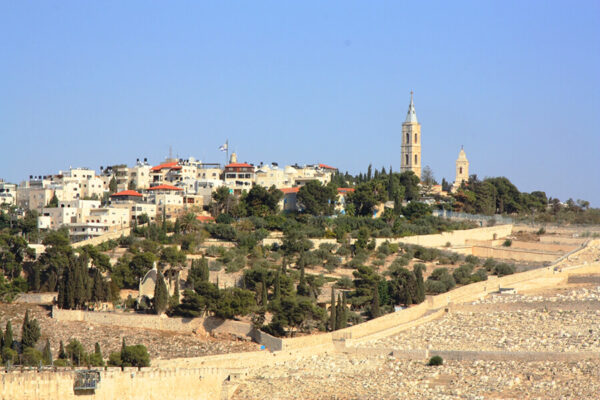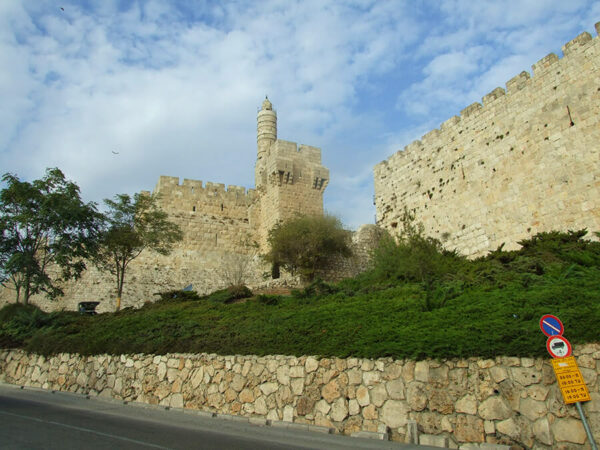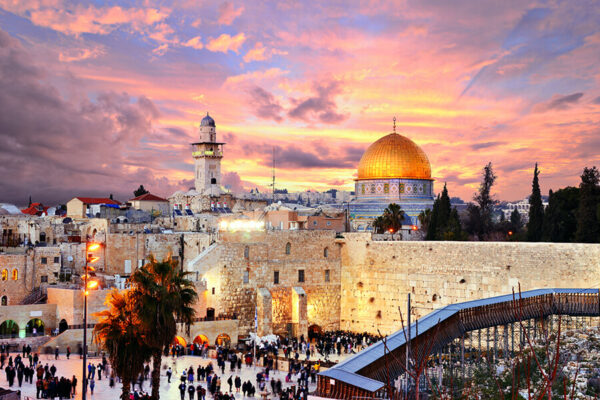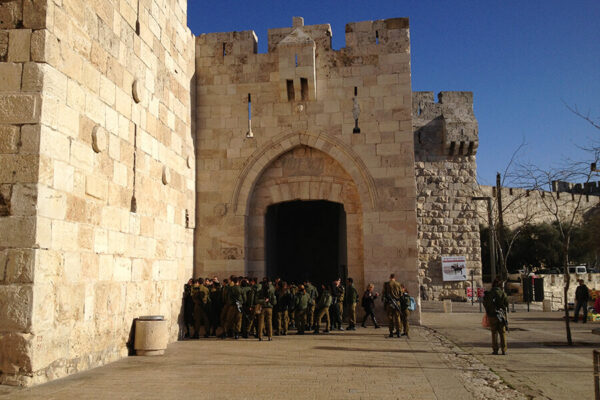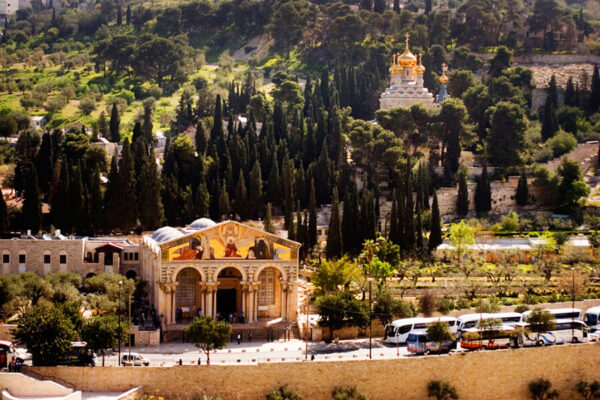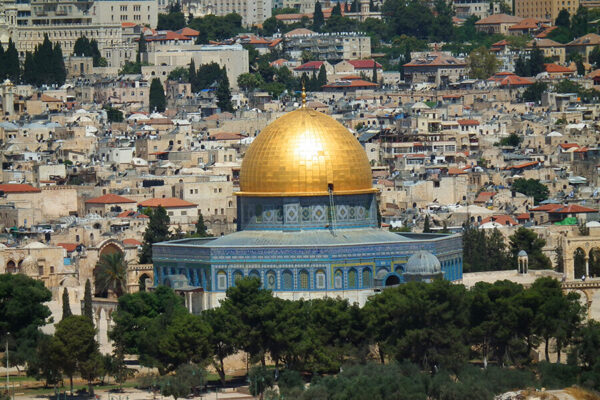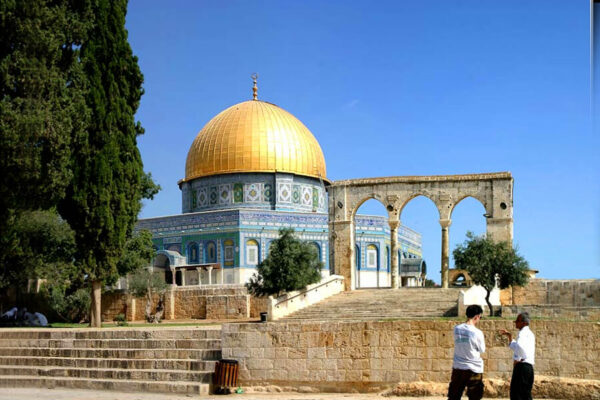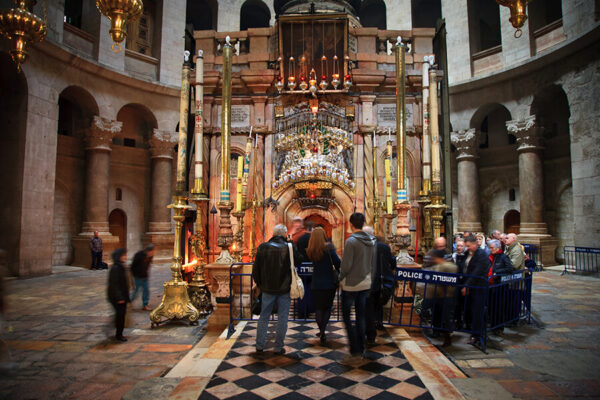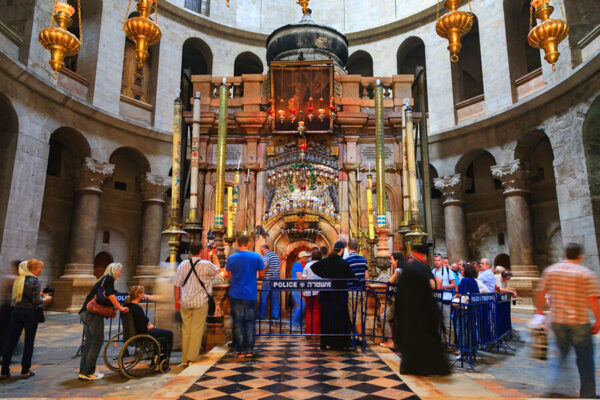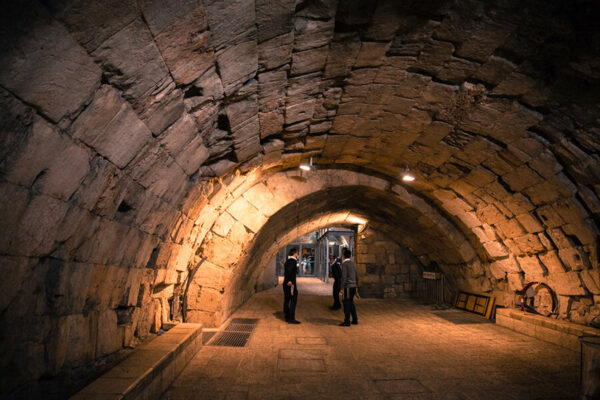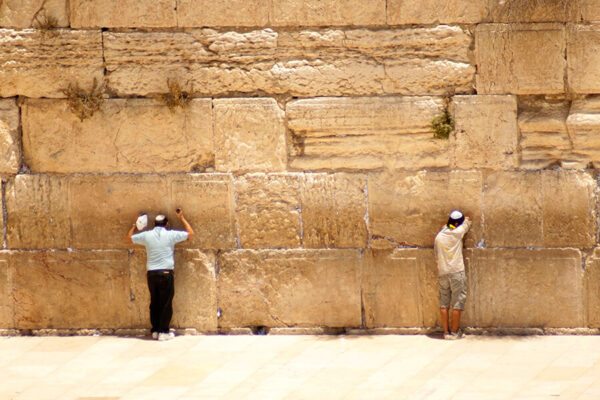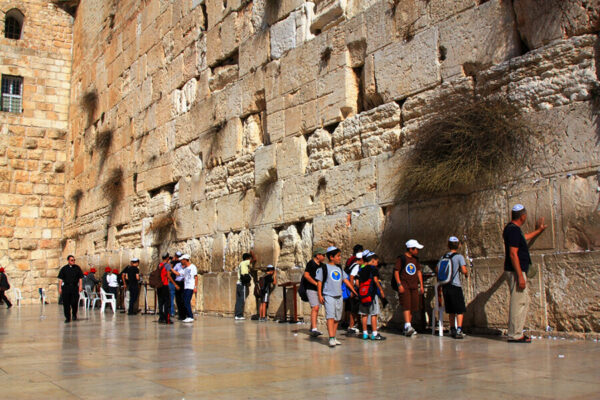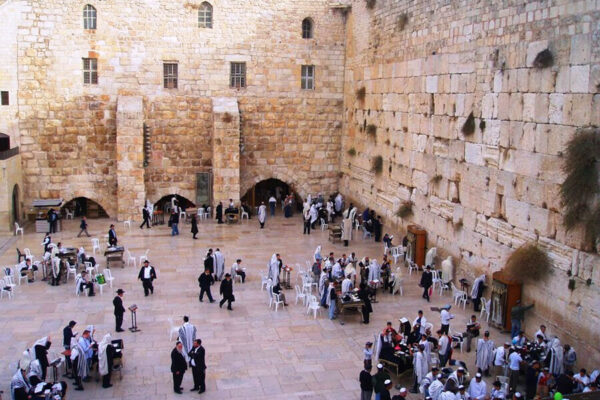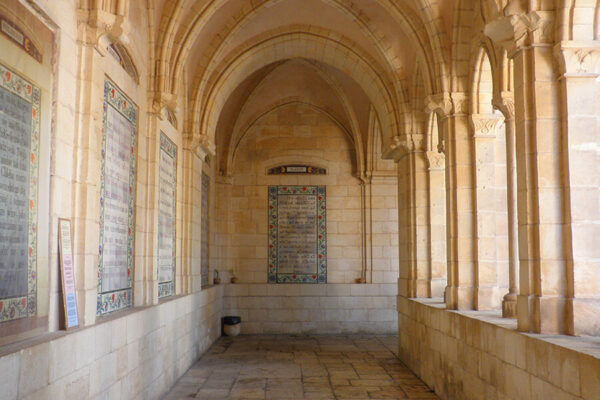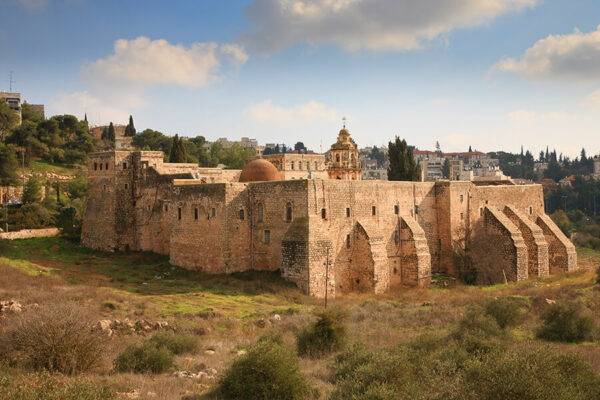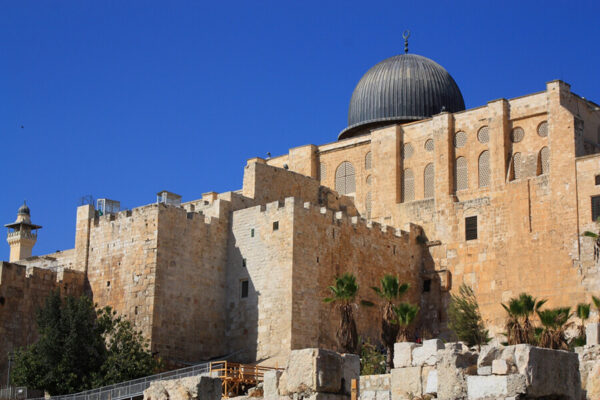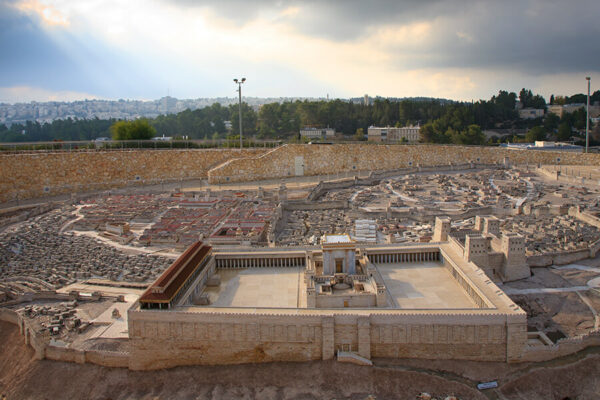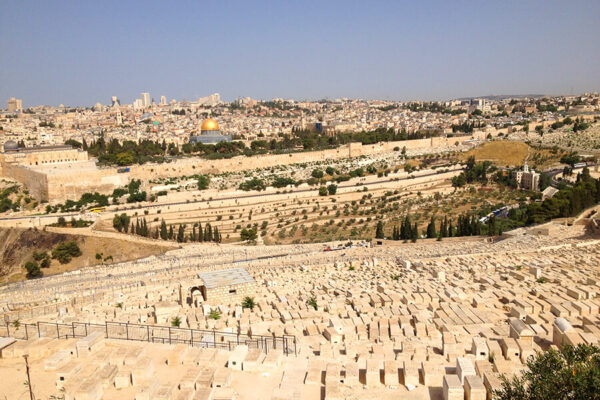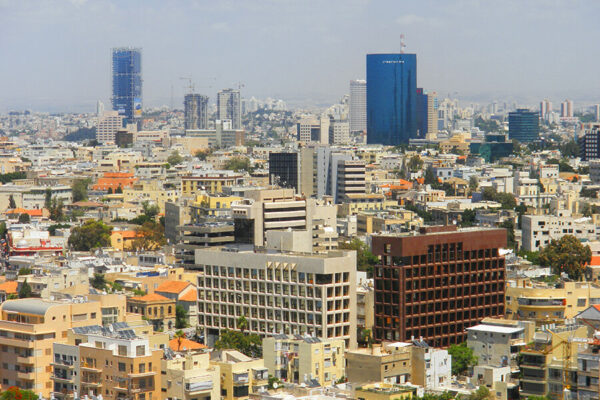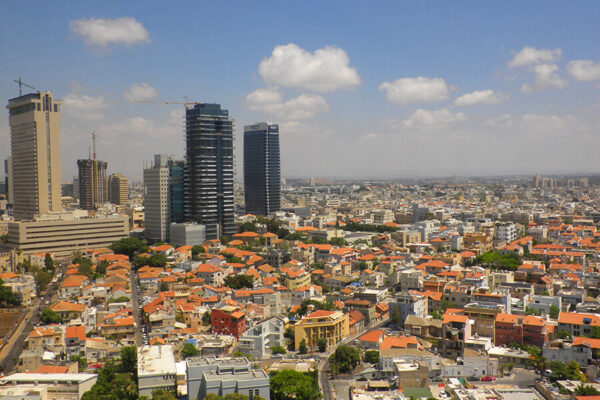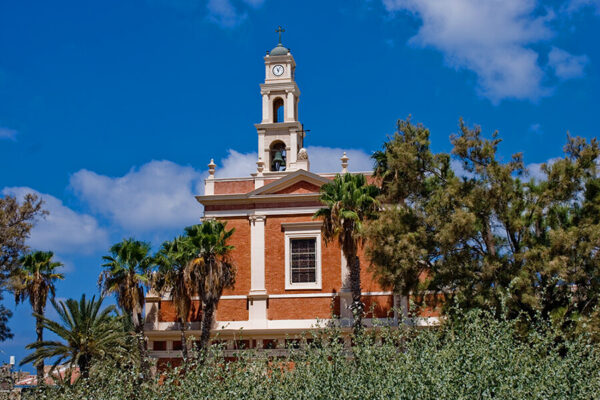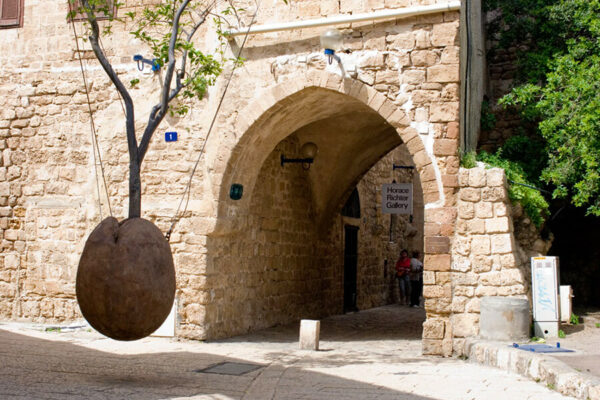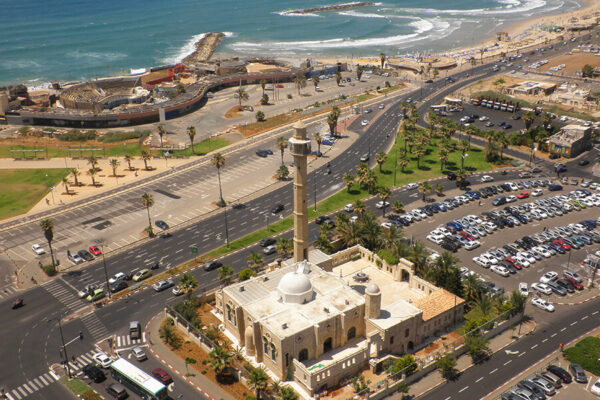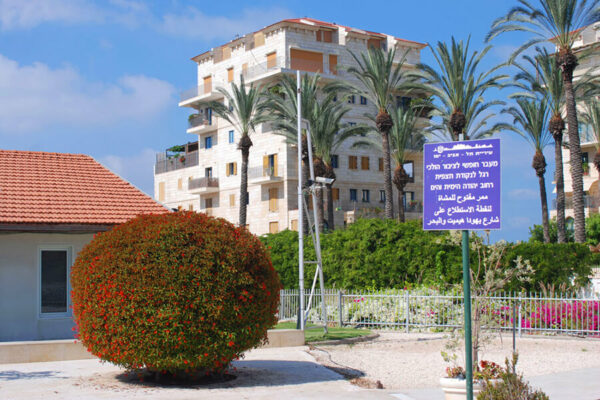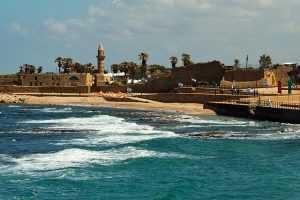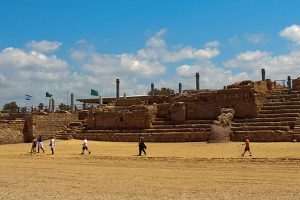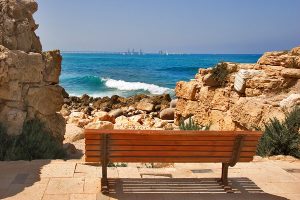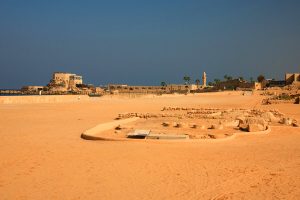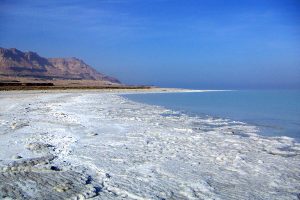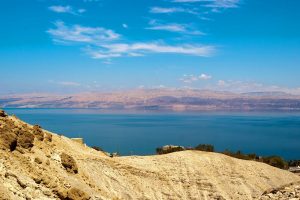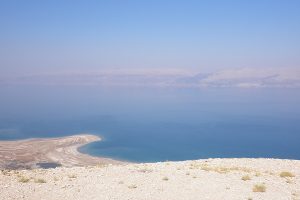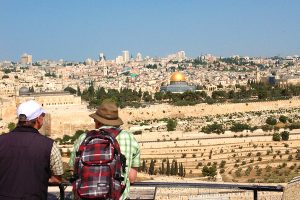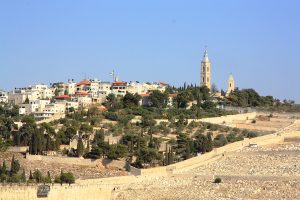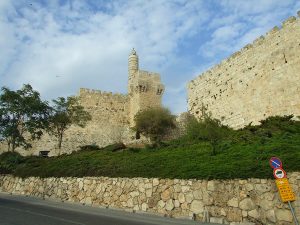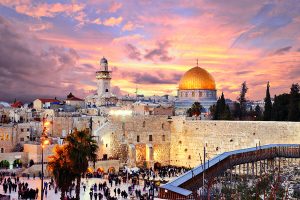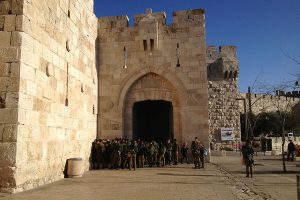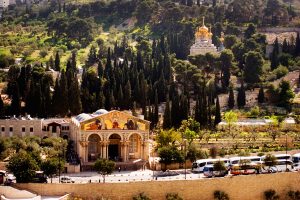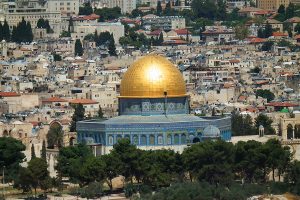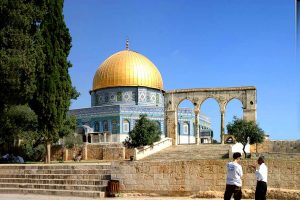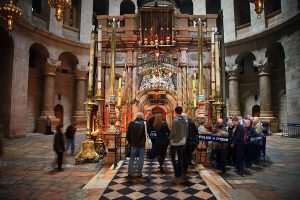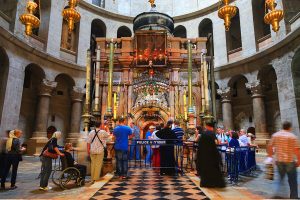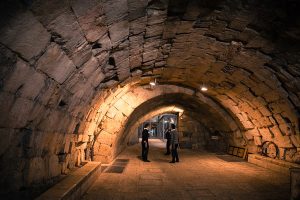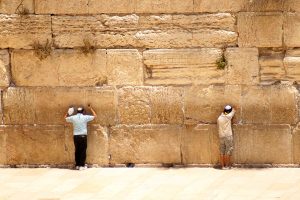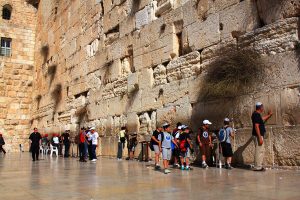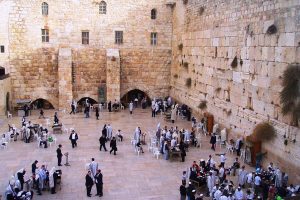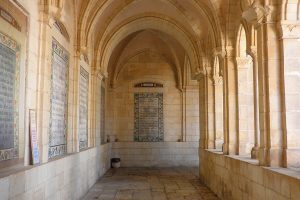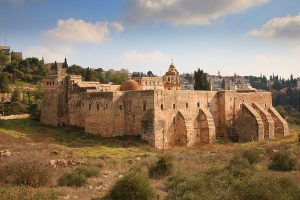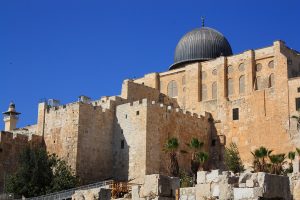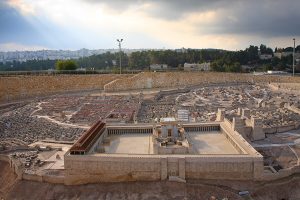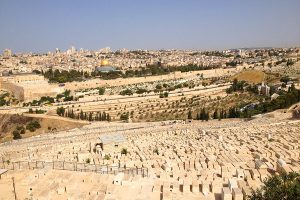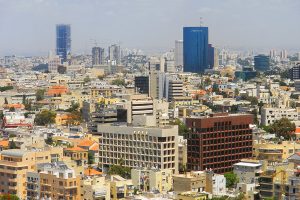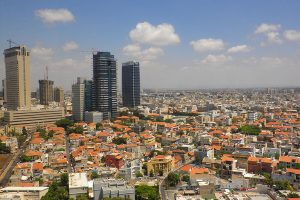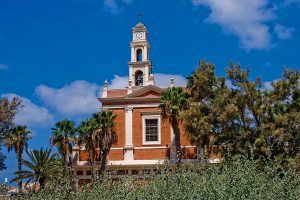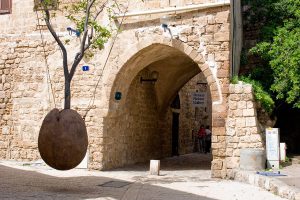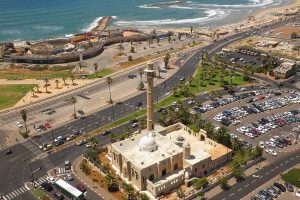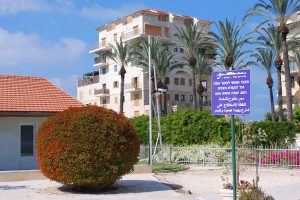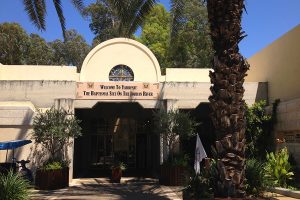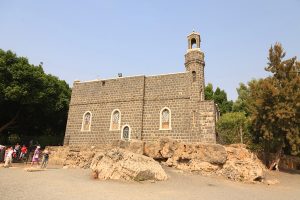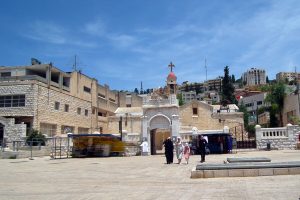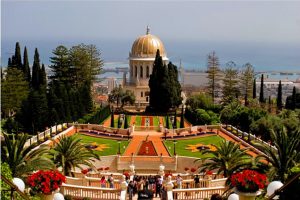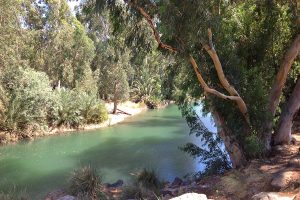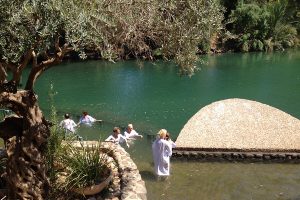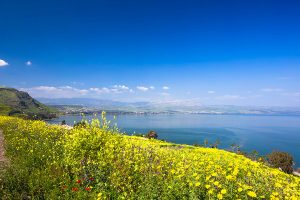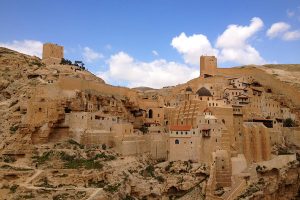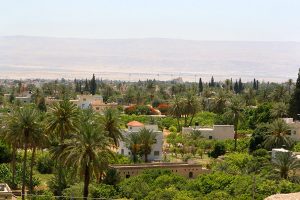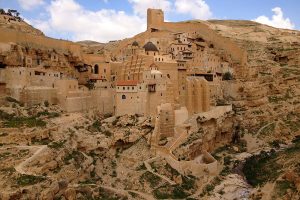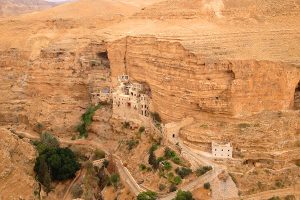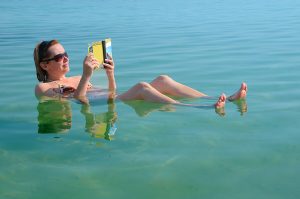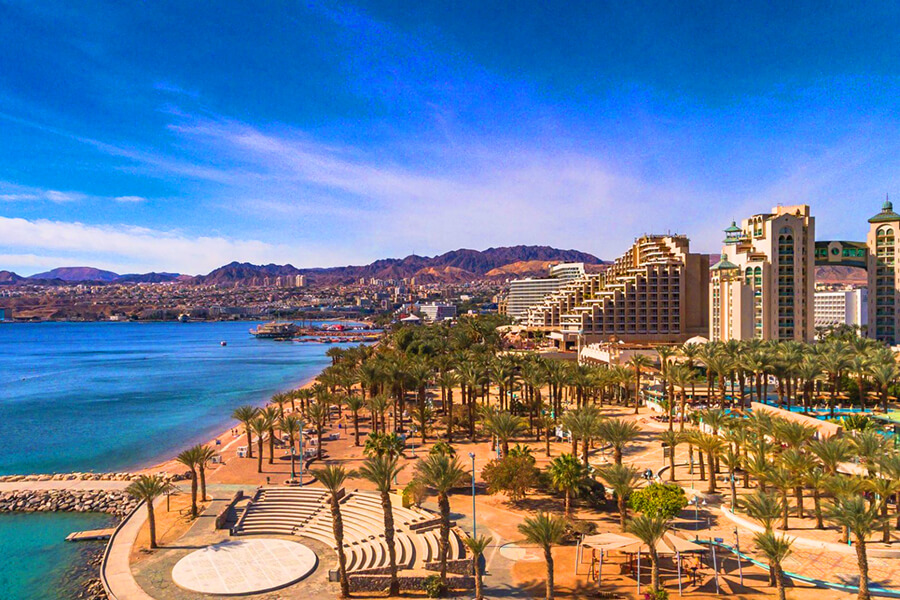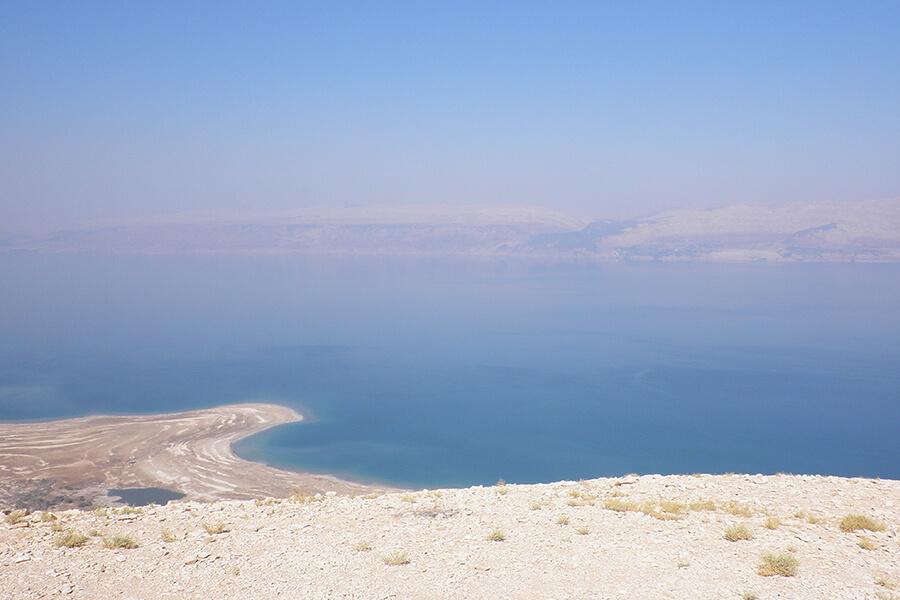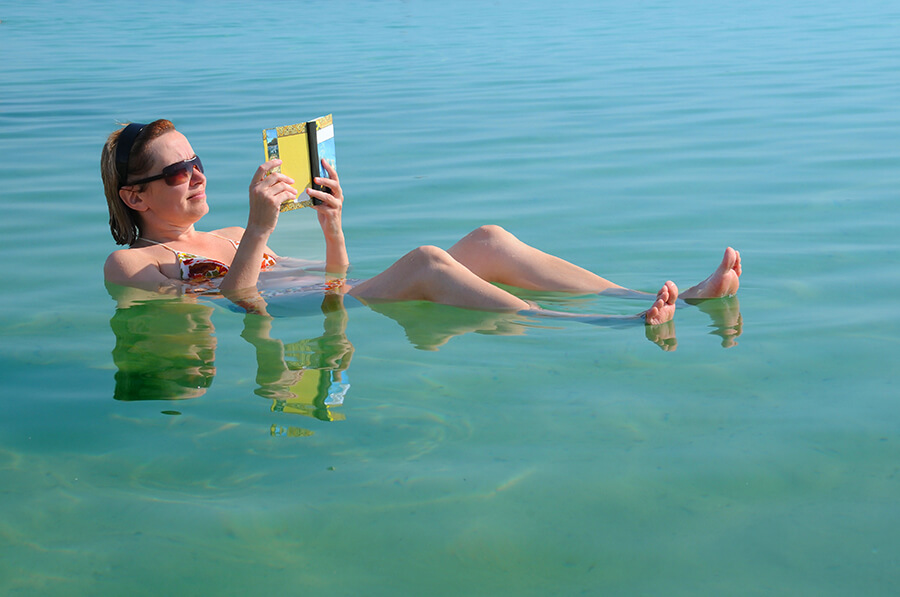Panorama of the Old City of Jerusalem from the Mount of Olives.
The Church of the Ascension on the Mount of Olives (Imvomon) was built by Queen Equal to the Apostles between 330 and 378. at the place of the ascension of Jesus Christ.
“Pile” – the place of the Ascension of the Lord – in the floor of the chapel, there is a stone framed by a rectangular marble frame embedded in a natural rock. The stone has a recess in the form of a print of the left human foot. The Savior’s foot or “pile” – this was the name Russian pilgrims called this stone.
Russian female Spaso-Ascension Monastery on the Mount of Olives. On the territory of the monastery there is a place where, according to legend, the Mother of God stood during the Ascension, as well as the place of the First and Second Finding of the head of John the Baptist. The most magnificent panorama of Jerusalem opens from the belfry of the Olive Monastery, which is called the “Russian candle”.
Church of the Tears of the Lord (Dominus Flevit) – built on the spot where Jesus Christ stopped in front of the entrance to Jerusalem. By this time, He was already rejected in Nazareth, Corazim and Kapernaum, and, foreseeing further events, he stopped on the Mount of Olives directly opposite the Temple and could not refrain from tears, thinking about the fate of Jerusalem: “When he approached the city, then looking at it, cried about him. And he said: oh, if only you had found out on this your day, that it serves your peace! But now it is hidden from your eyes; for the days will come upon you, when the enemies will besiege you with trenches, and surround you, and constrain you from everywhere; And they will ruin you, and will beat your children in you, and will not leave you stumbling, because you did not know the time of your visit ”(Luke 19: 41-44).
Gethsemane is a locality at the foot of the western slope of the Mount of Olives, in the Kedron valley, east of the Old City of Jerusalem, in which the Gospel events took place. There are several Christian churches here: the Church of All Nations, the Tomb of the Virgin Mary, the Russian Orthodox Church of Sts. Mary Magdalene, Gethsemane grotto.
Temple of sv. Mary Magdalene – was built in 1885 by order of Emperor Alexander III in memory of his mother – Empress Maria Alexandrovna, whose heavenly patron was Equal to the Apostles Mary Magdalene. Here rest sv. the relics of the Great Martyrs Grand Duchess Elizabeth Feodorovna and her cell-mares in. Barbarians.
Gethsemane Garden is revered as a place of prayer for more often Jesus Christ on the night of his arrest
The tomb of the Virgin is the greatest Christian shrine, where, according to the Holy Tradition, the Most Holy Theotokos was buried by the apostles. According to a legend known from the 4th century, the Virgin Mary died in Jerusalem in 57 at the age of 72, and the apostles buried Her in Gethsemane in a family tomb, where the burial places of her parents Joachim and Anna and husband Joseph the Baptist were.
Via Dolorosa – The Way of the Cross – the path of the suffering of Christ from the place of condemnation to the place of the Crucifixion. On Via Dolorosa are 9 of the 14 stops of the Stations of the Cross of Christ.
The last 5 stops are located on the territory of the Church of the Holy Sepulcher.
The Church of the Holy Sepulcher is the main shrine that unites all Christian denominations. It is a complex of buildings that were built on the site of Calvary, where, according to Scripture, Jesus Christ was crucified, buried and resurrected.
The Wailing Wall is part of a massive stone wall around the Temple Mount of the Old City of Jerusalem, which survived the destruction of the Second Temple by the Romans in 70. The Wailing Wall is considered the most sacred place in Judaism, a place of prayer where Jews mourn the destroyed shrine and pray to God for the revival of Israel.
Saturday meeting in a Jewish family in Jerusalem
The program starts at the Garbage Gates of the Old City of Jerusalem. During these hours, the square in front of the Wailing Wall is filled with hundreds of people praying for a variety of religious movements in Judaism. All are dressed in traditional holiday clothes and hats, and each group has its own characteristics. Then we go to the hospitable house, where we are waited for the “meeting of the Sabbath” at the family festive meal, which is held in accordance with all canons and religious rituals. At the beginning of the evening, Shabbat candles are lit and a blessing is pronounced. Then traditional Saturday dishes are served, challah is a special Saturday bread, Shabbat wine and the celebration of the “Queen-Sabbath” begins!
We return to the Hotel.

